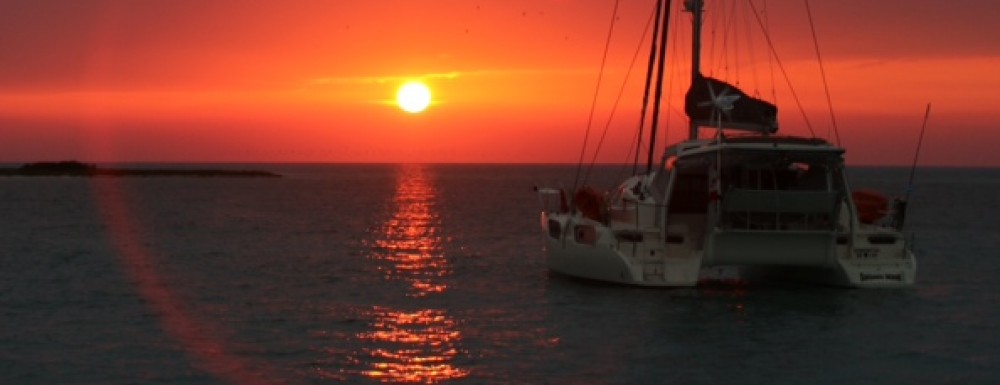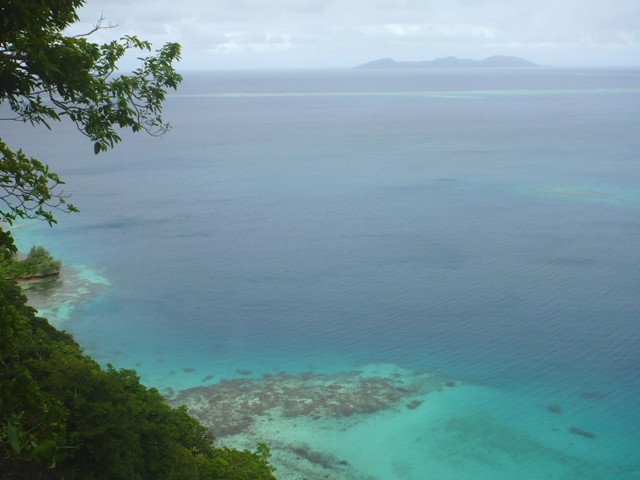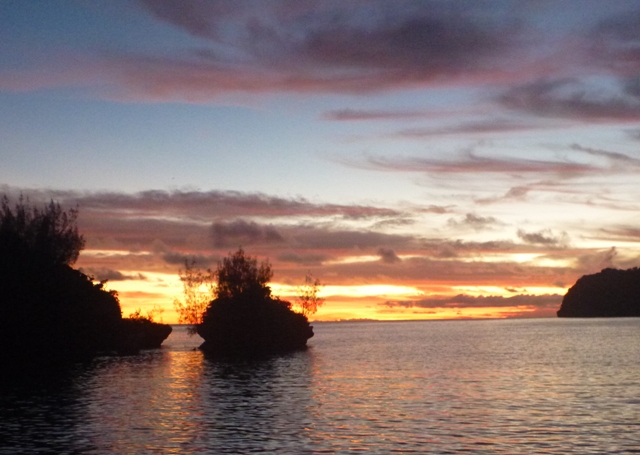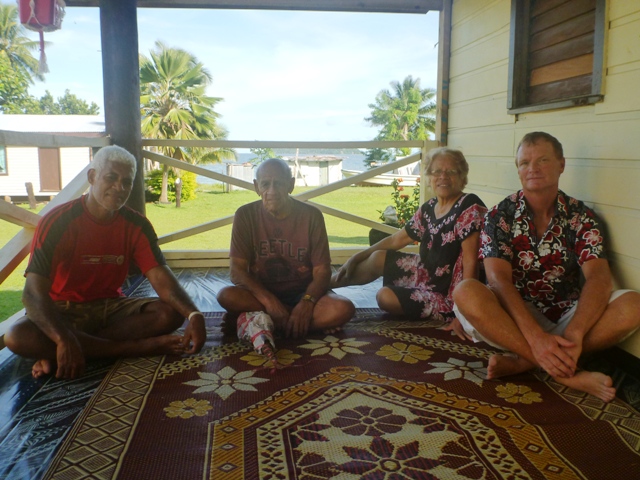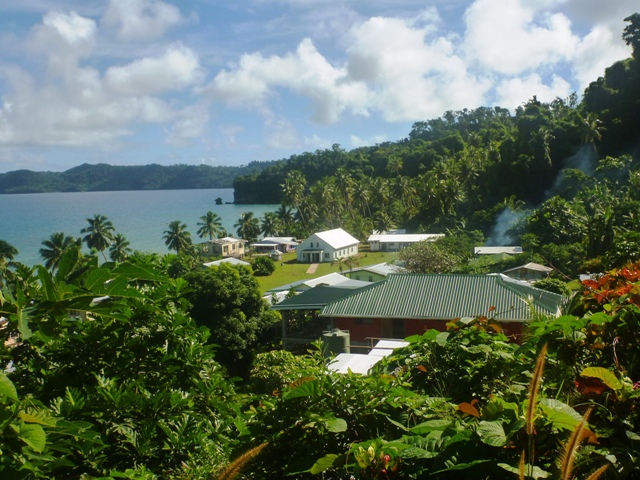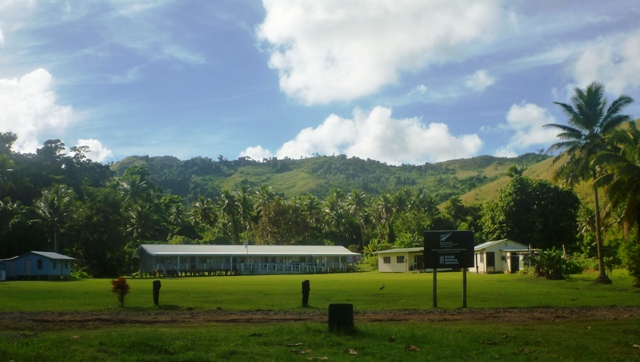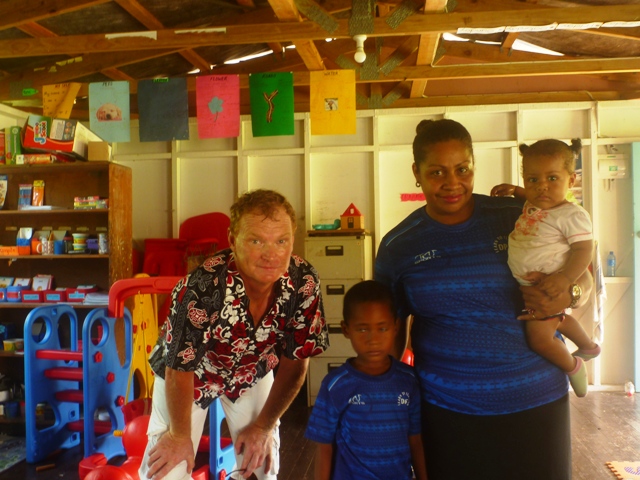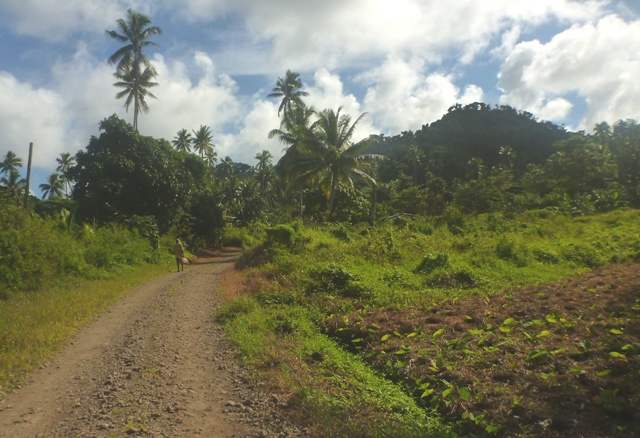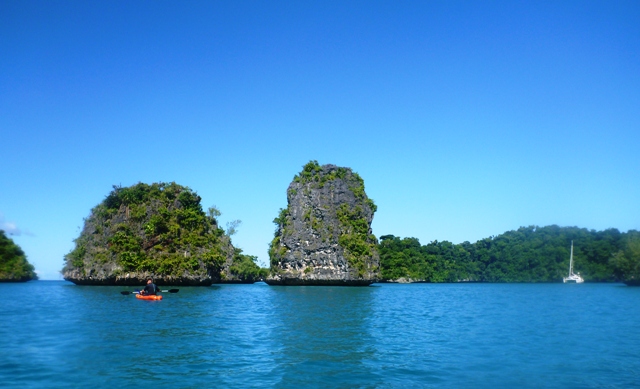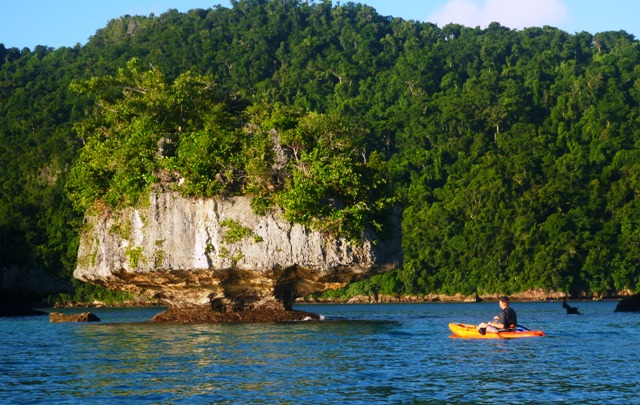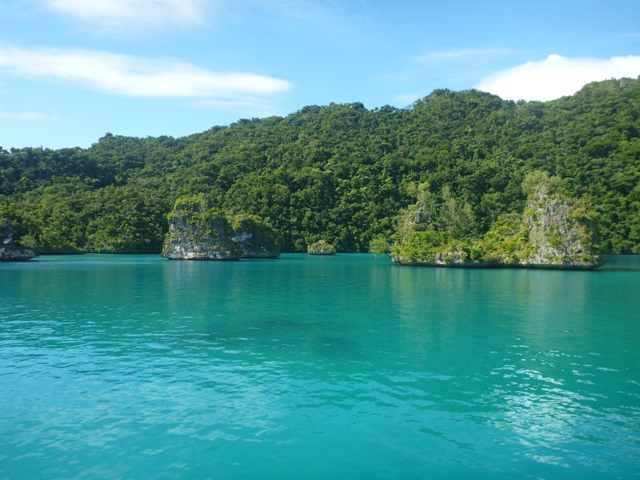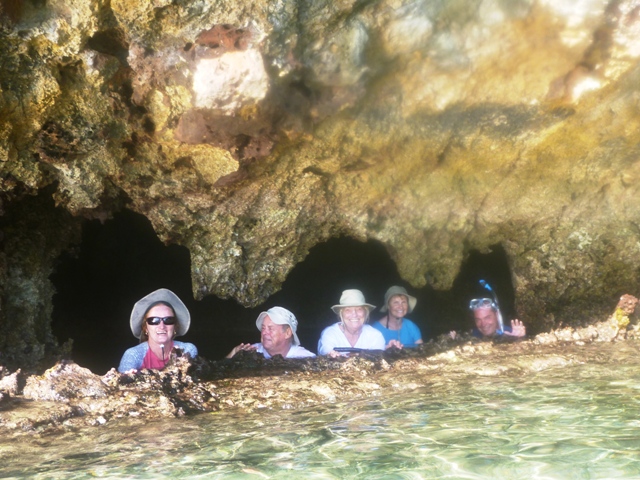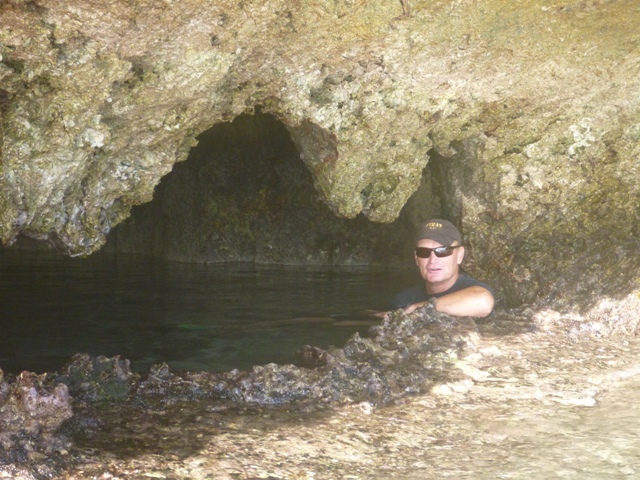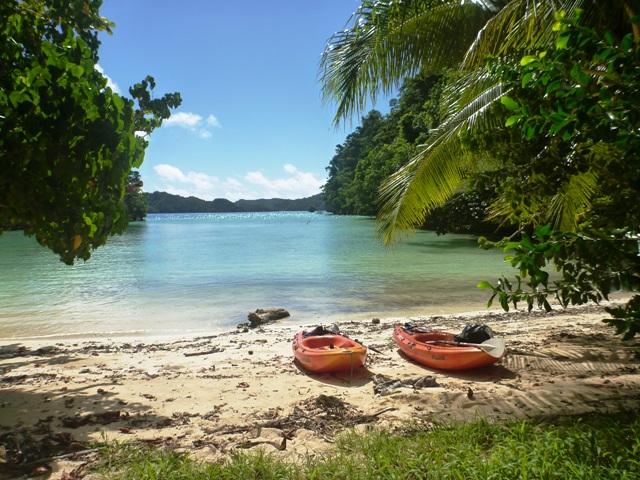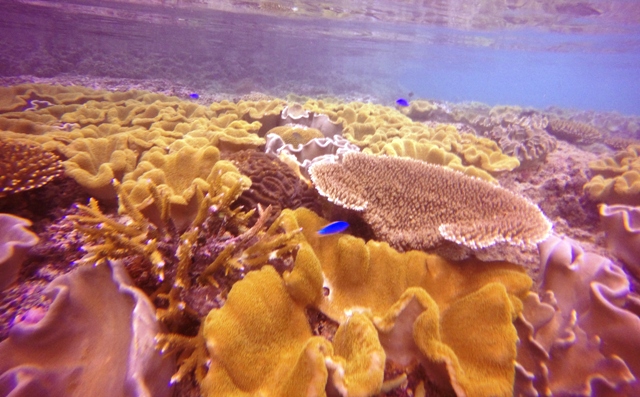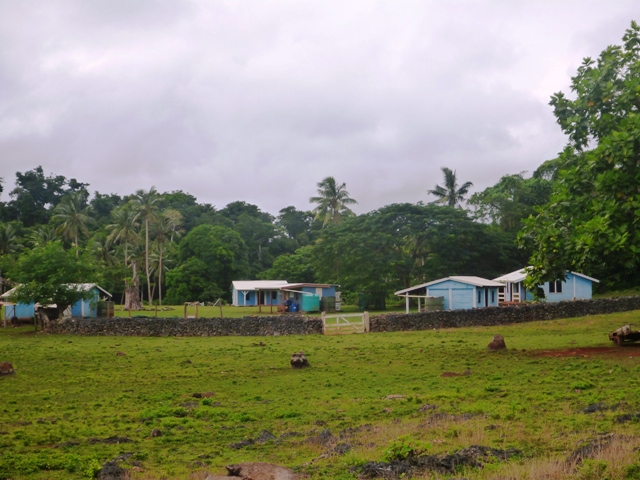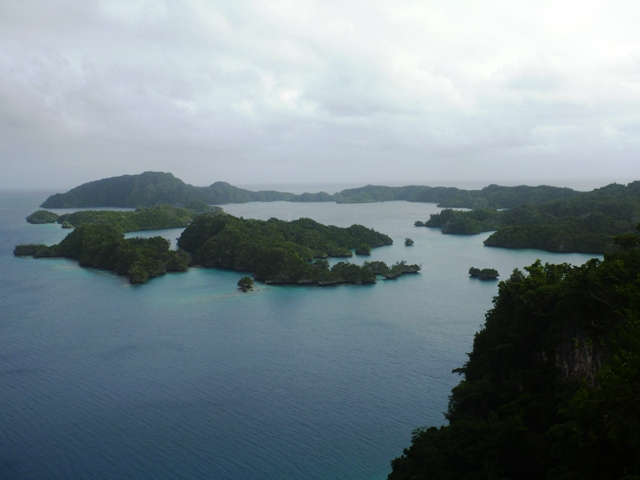Approx 130nm south of Vanua Balavu is Fulaga (pronounced Fulanga) which is an island that welcomes yachties and in fact has a system where a family hosts a yacht. We had Easterly winds and calm seas so had a great sail down to Fulaga.
Once thru the pass, which is 50m wide and 250m long and where the current flows up to 4 knots if you don’t get the tide right, you enter a beautiful lagoon with lots of mushroom islets with palm trees on them, crystal clear water and small white beaches dotted around. The local people here get around the lagoon in kayaks or long boats to go fishing.
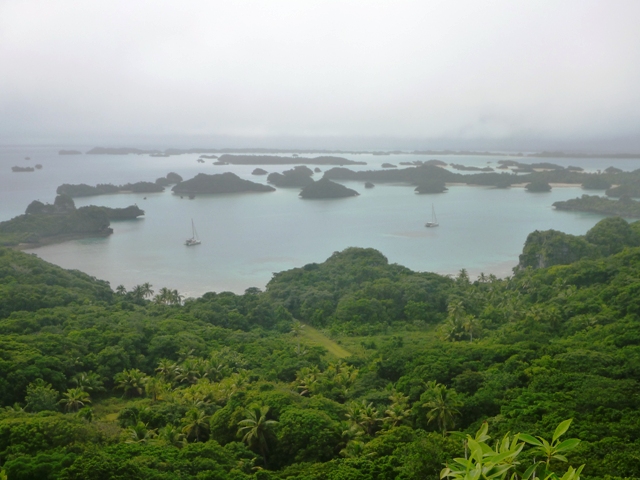
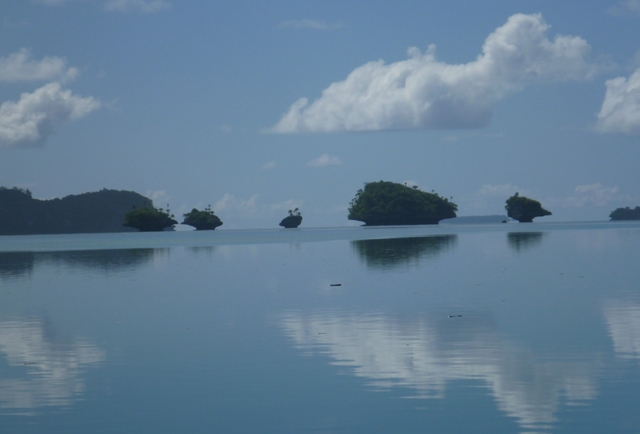
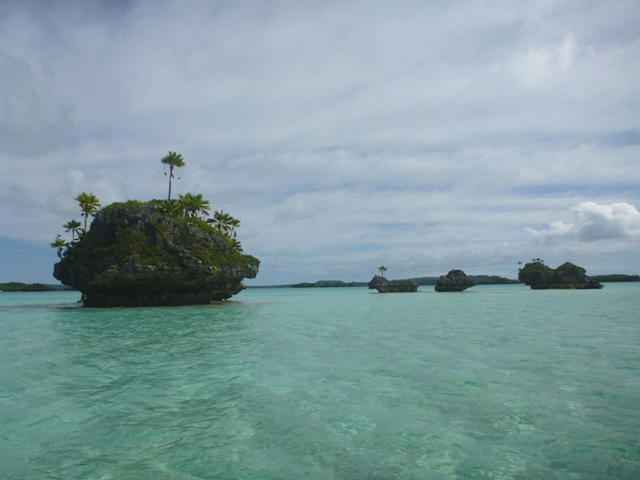
It was Saturday when we arrived so we anchored close to Moana-I-Cake, the village where the chief lives and dressed to meet the chief walking the 20 minute path to the village.
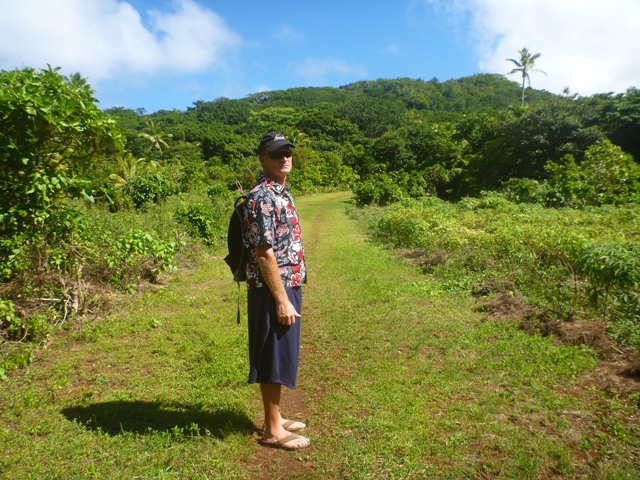
Soco met us on the path and took us to Bill, whose role in the community is to introduce visitors to the chief after checking Fiji paperwork and collecting your $50 anchoring fee to be here. The chief was actually out fishing so one of his sisters performed the ceremony and accepted our yagona/ kava root and us into the village. With it being the beginning of the season we were the 4th yacht and the people here were excited to see us as they knew more were to come. In 2018, 70 yachts came to Fulaga.
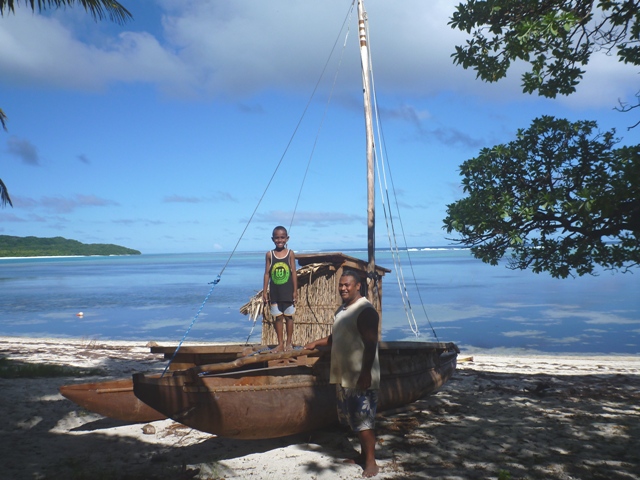
After the ceremony Bill walked us around Moana-I-Cake, which included a school for 80 children including boarders from the other 2 villages on Fulaga, a health clinic, church, community hall, volleyball net, post office and a store to buy staple items, which sounded as though it had recently been closed.
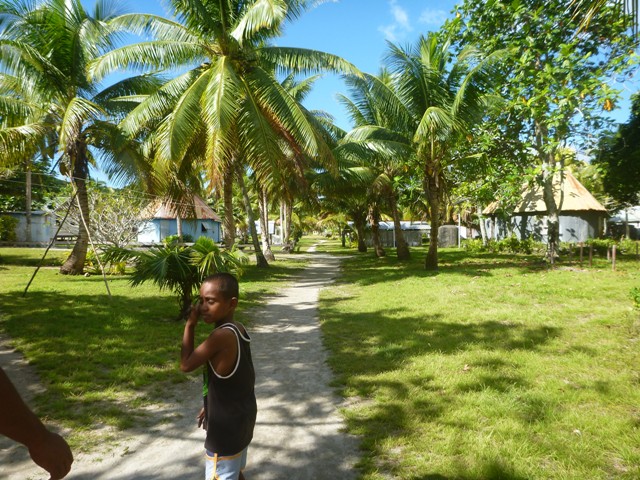
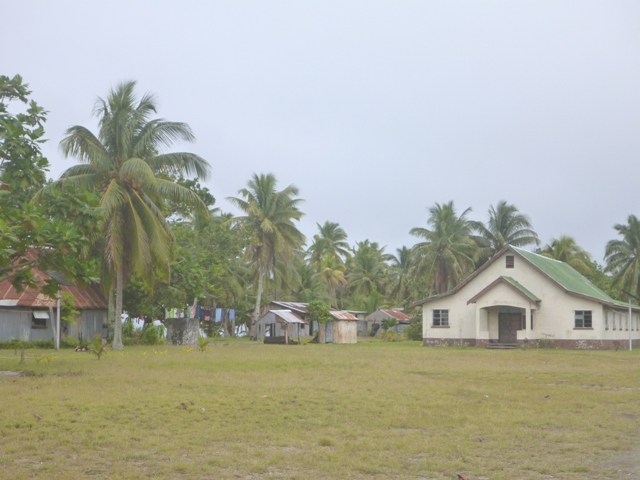
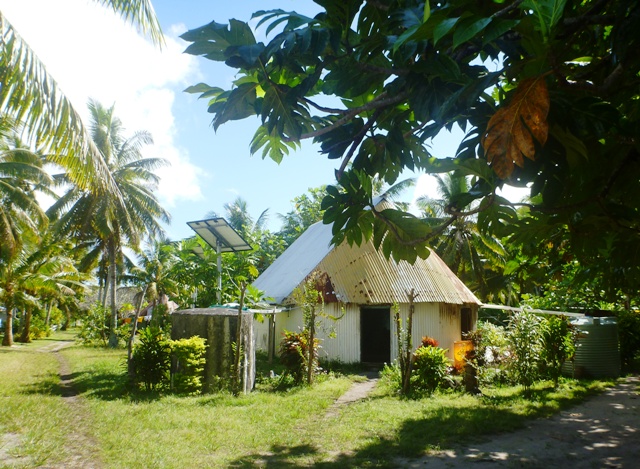
Bill then took us to meet our host family; Tara (Chiefs other sister) and Joe; coincidentally Bills parents. Tara had prepared tea and pancakes and had bunches of bananas for us. We were asked to return Sunday for church at 10am and lunch after with the family.
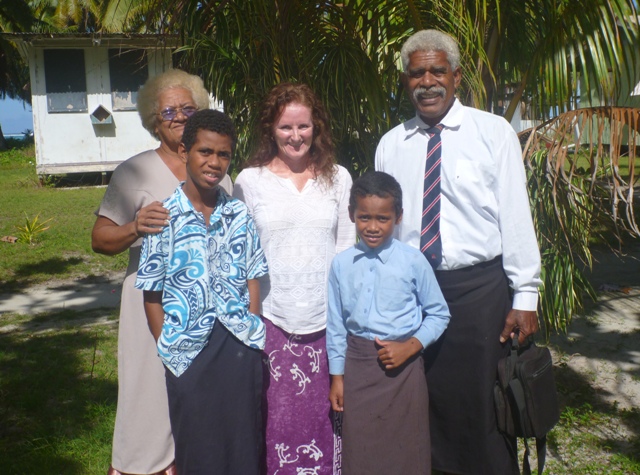
Sunday’s are church day with 3 sessions and family time, no work allowed, with everyone dressing up to go to the Methodist church here in their sulus, long shirts and ties for men and a long flowing dress for the women. The start of church is pronounced with the beating of huge hollowed out logs and the pastor then makes his way in. The service is in Fijian so we didn’t understand what was said even when they thanked us for coming. We wondered why everyone turned around and looked at us. Such beautiful harmonious singing which was worth the confusion.
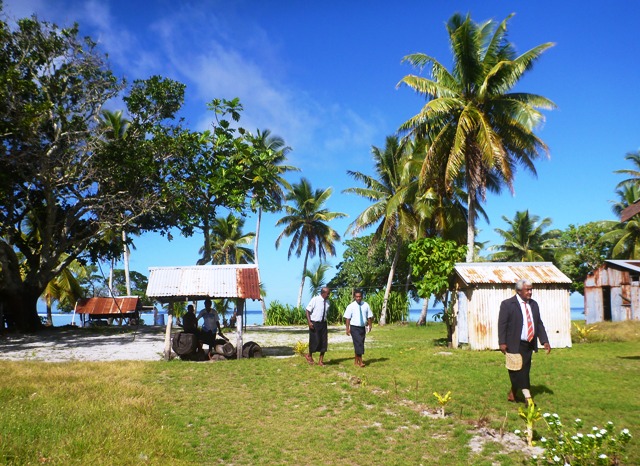
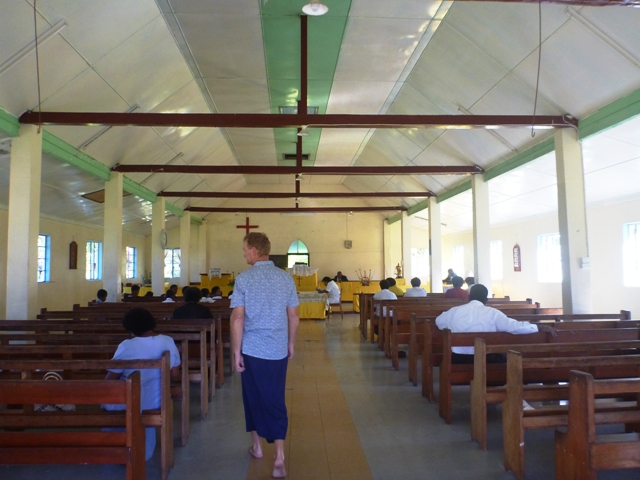
With no work being allowed on Sunday’s fish, shellfish, root vegetables and coconuts are all gathered on Saturdays. While in Fulaga we enjoyed 2 lovely seafood meals with Tara & Joe and any close family and friends that dropped by to talk. Each time we were sent away with leftovers as we hadn’t eaten enough. These people don’t have a lot but are very generous. We gave some gifts to our family as thanks in return and I baked them cakes when we went into the village.
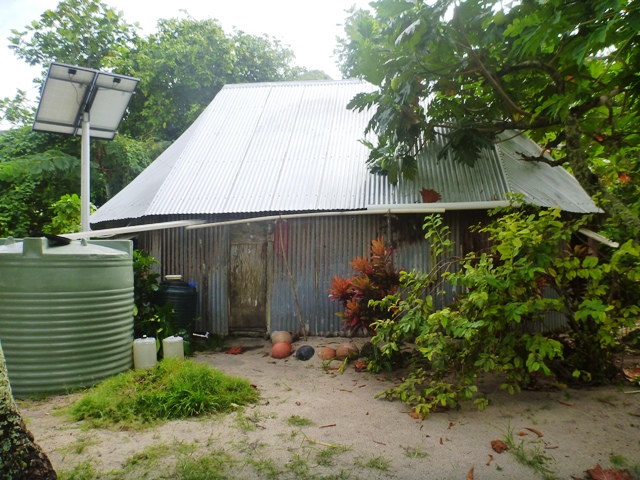
Everyone is so friendly with a nice Bula Bula everywhere we walked or stopping by the boat to say hello while at the various anchorages we were at. We were brought bananas, coconuts, passion fruit, oranges, papayas and fresh caught fish. With only 2 boats here we were totally being spoilt.
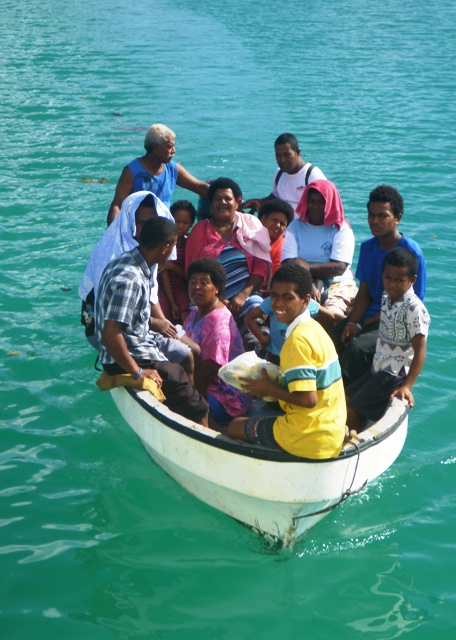
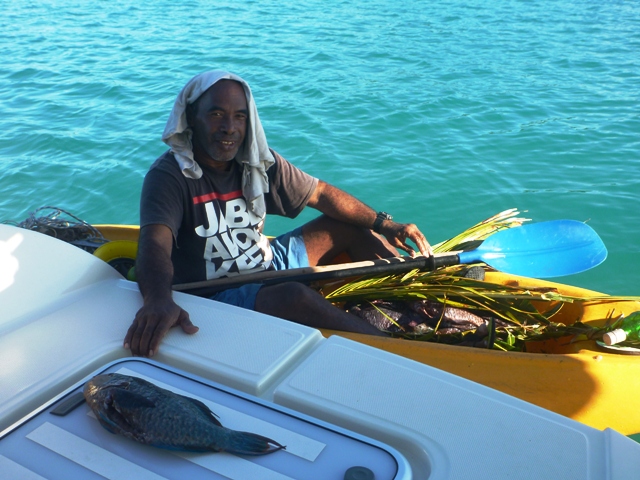
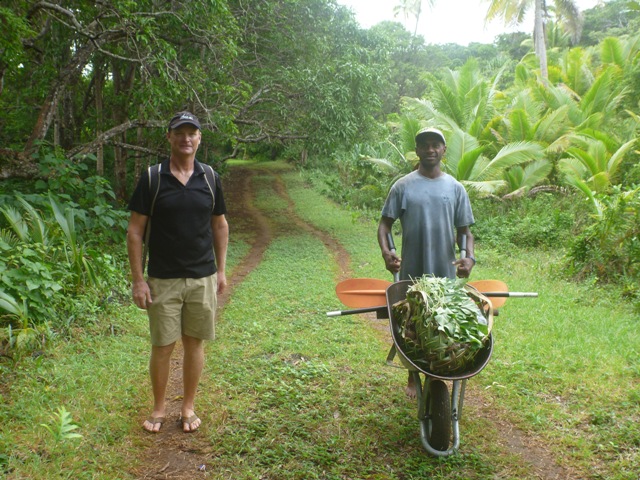
The Sandspit anchorage has lots of deserted white sand beaches to investigate at low tide, a brilliant blue pool at low tide, lots of small passes to snorkel thru within the inner lagoon and crystal clear shallow water & beautiful mushroom islets to kayak and dinghy about. We saw kingfisher birds and lorikeets, turtles and small reef fish.
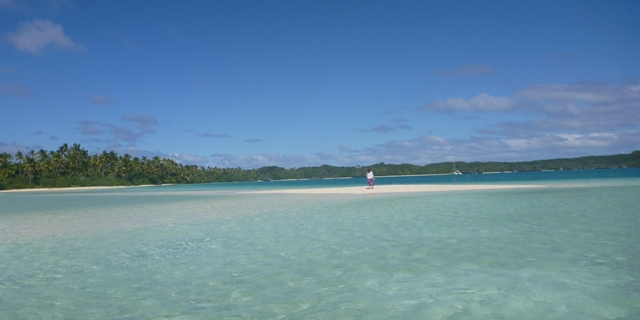
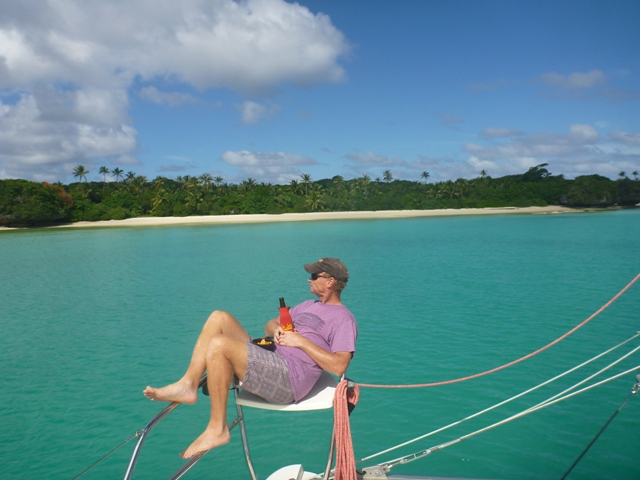
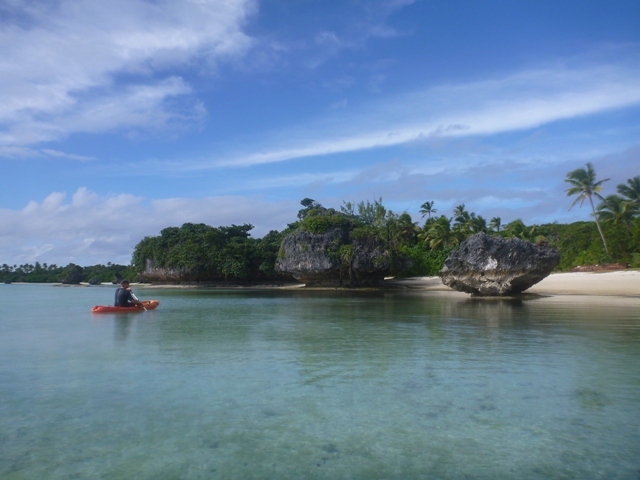
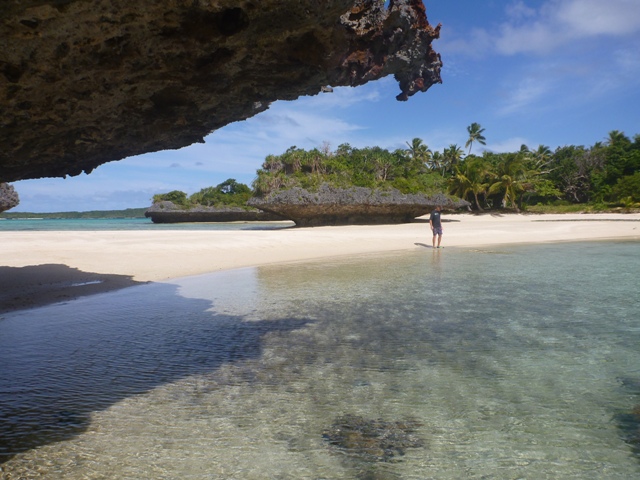
It has definitely been an interesting experience being here and learning about the culture here in Fulaga and being able to experience a little of their life.
The children are typically brought up by their grandparents and go to school in Fulaga till the age of 14. They then go to Suva for school with their parents or for some to boarding school and then on to look for work eventually returning to retire and take up responsibilities in the community. Land is handed down thru the family and includes an area for farming along with a cooking hut and a place to sleep and entertain.
There is no cell service (internet is available at the school), no electricity (each house has a solar panel), no airport but once a month a supply ship arrives delivering ordered supplies and moving family back n forth between Suva. The people here make money to buy fuel and staple items from wooden carvings, weaving mats, coconut oil and decorative string made from the coconut husk, mainly sold in Suva or resorts in West Fiji where family work.
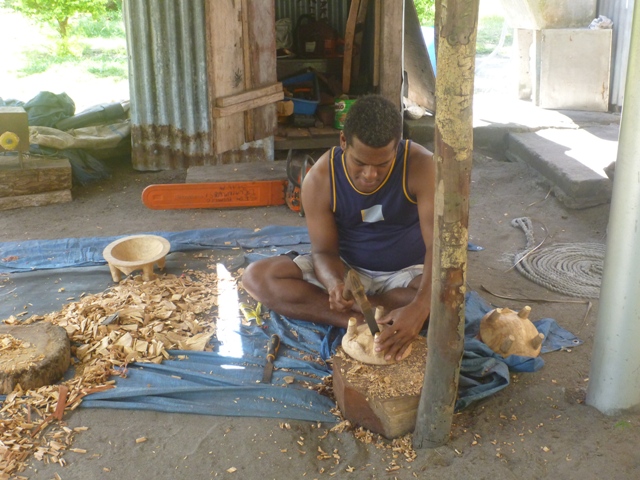
Tara and Joe really helped make our experience with the people on the island here enjoyable. A simple life where there are very few worries. To live here you need to slow down and enjoy this part of paradise and be able to fish and farm. Back to subsistence living here.
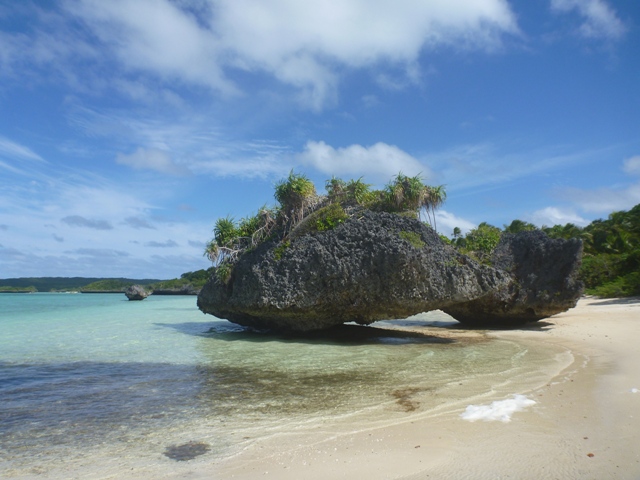
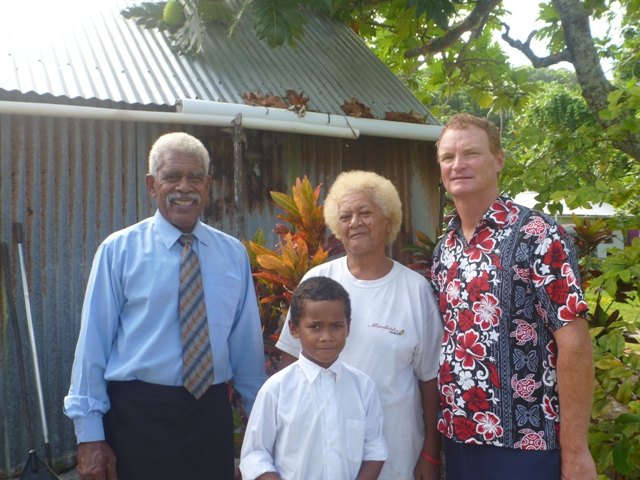
Well we have no fresh veges left and we have family coming so it’s off to Western Fiji to restock and meet them.
